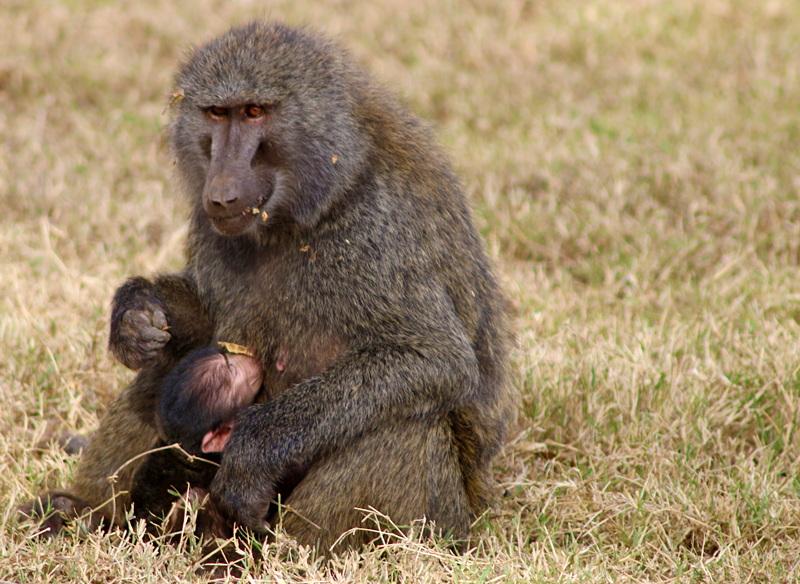W hile I was at Lake Nakuru National Park in Kenya, I was fortunate to observe one of the most basic and yet fascinating instincts of nature: an olive baboon nursing her young offspring.
Found in 25 countries throughout much of central Africa, the olive baboon is one of the largest species of monkey: a male can weigh as much as 110 pounds or approximately 50 kilograms; and attain a height of as much as 45 inches or 114 centimeters tall. Food can be stored in a cheek pouch.
Groups of olive baboons are known as troops; and there could be as few as 15 or as many as 150 members of a troop. Newborn olive baboons have black coats of fur and bright pink exposed skin, as seen in the photographs below which were taken in chronological order.
















Summary
I truly enjoyed watching animals in their native habitat going about their lives — such as when I was unexpectedly treated to witnessing a cheetah surprising its prey, killing it and feasting on it.
Watching zebras and their sometimes quirky behavior was interesting to me. There was the viewing of the lion with one eye with his lioness companion. I enjoyed hanging out with elephants at a watering hole; admiring giraffes both in the wild and at a nature conservation education center; and observing playful vervet monkeys at Lake Nakuru National Park…
…and let us not forget the different varieties of birds which I spotted while on safari in Kenya.
There are more photographs of different animals on deck from that safari to be highlighted in future articles — including but not limited to hippopotami, rhinoceroses and buffalo.
Please stay tuned…
All photographs ©2015 by Brian Cohen.

